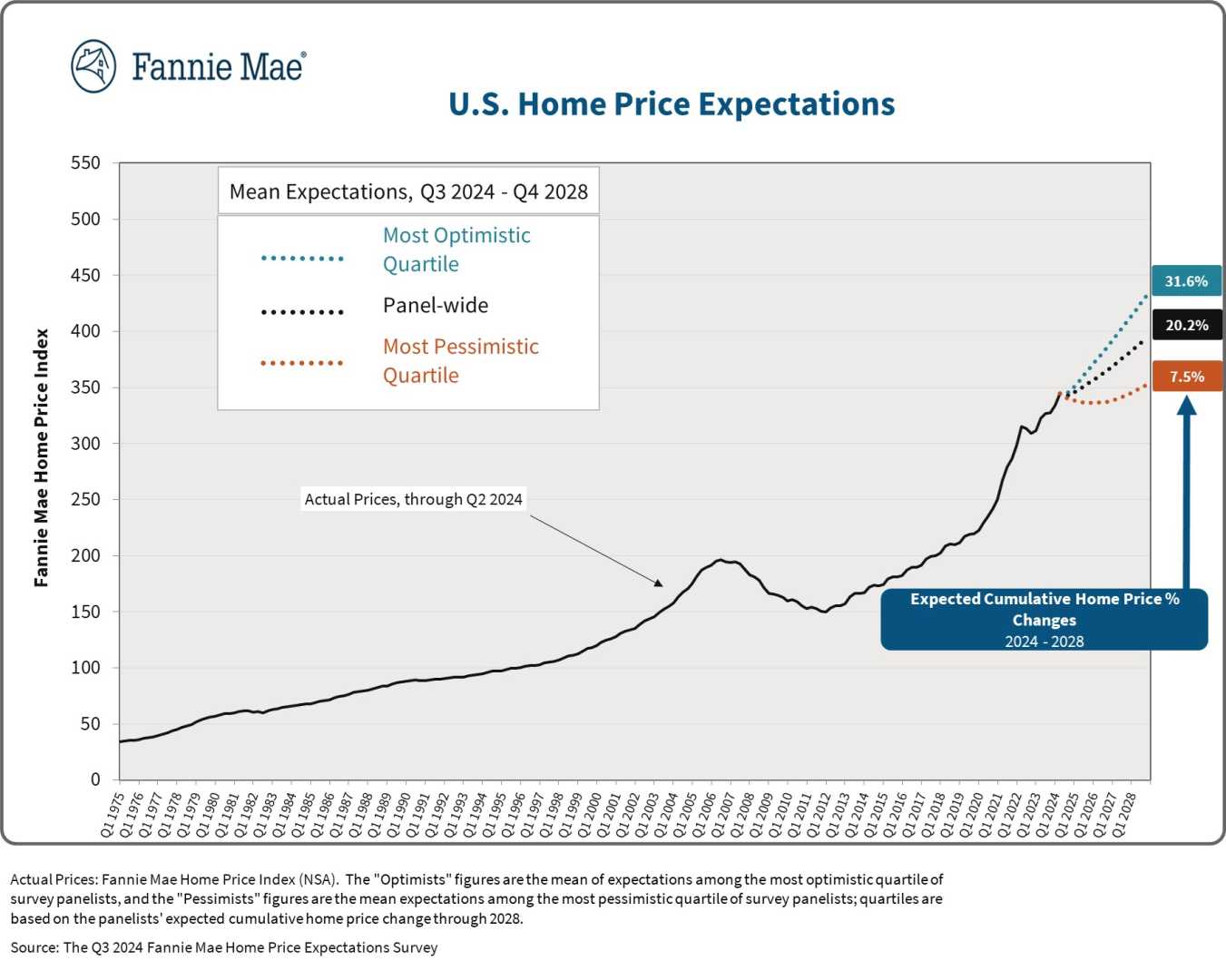Business
Fannie Mae Forecasts Higher Mortgage Rates, Fewer Home Sales in 2025

WASHINGTON, D.C. — Fannie Mae‘s latest economic and housing forecast for 2025 paints a grim picture for mortgage lenders and potential homebuyers, predicting higher mortgage rates and fewer home sales than previously anticipated. The government-sponsored enterprise (GSE) revised its projections downward, citing affordability challenges and the ongoing lock-in effect as key factors.
In its January report, Fannie Mae now expects the 30-year fixed-rate mortgage to average 6.6% in 2025, up from its December forecast. By the end of the year, rates are projected to reach 6.5%, a 20-basis-point increase. For 2026, the GSE no longer anticipates rates falling below 6%, with a year-end projection of 6.3%.
“While we still see signs of resilience in the labor market, the higher mortgage rates that are associated with a growing economy will likely continue the affordability challenges faced by many potential homebuyers,” said Mark Palim, Fannie Mae’s chief economist, in a press release. “Due to the ongoing lock-in effect and affordability constraints, we currently expect another year of sluggish existing home sales.”
Total home sales for 2025 are now forecast at 4.89 million units, down from the previous estimate of 5.00 million. For 2026, the projection has been reduced to 5.25 million units from 5.47 million. This downward revision has led Fannie Mae to lower its purchase volume forecast by $19 billion for 2025, now standing at $1.4 trillion. The 2026 forecast was also cut by $63 billion to $1.6 trillion.
Refinance activity is expected to decline as well, with Fannie Mae reducing its 2025 forecast by $33 billion to $496 billion. The 2026 refinance outlook was trimmed by $31 billion to $693 billion.
Despite these challenges, there is a silver lining. Palim noted that income growth is expected to outpace both home price and rent growth in 2025. Additionally, new homes are now competitively priced with existing homes and are more readily available. “Otherwise, our expectation that affordability will remain a challenge, combined with the elevated rate environment, reaffirms our view that on a national level the 2025 housing market is shaping up to feel a lot like 2024,” he said.
Home prices, meanwhile, continue to rise. The Redfin Home Price Index increased by 0.4% in December from November on a seasonally adjusted basis, and by 5.4% year-over-year. Redfin Senior Economist Sheharyar Bokhari expects prices to grow at a similar rate in 2025. “Prices will keep going up consistently because it’s unlikely there will be enough new inventory to meet buyer demand,” Bokhari said in a press release. “We expect there will be slightly more sales this year, largely due to pent-up demand, but there won’t be enough of an increase in listing activity to put significant downward pressure on prices.”
Despite the cautious outlook from Fannie Mae and Redfin, some industry players remain optimistic. The Real Brokerage, which operates in the U.S. and Canada, reported that its agents are preparing for a recovery in the housing market. “Our agents’ outlook for 2025 signals a turning point for the industry,” said Tamir Poleg, chairman and CEO of Real. “Even in an elevated rate environment, agents are preparing for recovery as the housing market emerges from two years of historically low transaction activity.”
The company’s Transaction Growth Index, which tracks year-over-year changes in home sales activity, showed modest expansion in Canada with a score of 56.7, though it dipped slightly from November’s 61.0. In the U.S., the index edged down to 46.8 from 46.9. A score above 50 indicates an expanding market.
As the housing market navigates these challenges, Fannie Mae’s revised forecast underscores the ongoing impact of higher mortgage rates and affordability constraints on both buyers and lenders.












